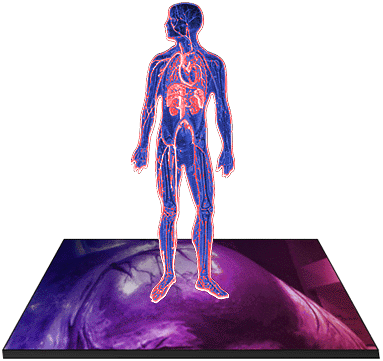Tubular Circulation
In a general sense, a vessel is defined as a hollow utensil for carrying something: a cup, a bucket, a tube. Blood vessels, then, are hollow utensils for carrying blood. Located throughout your body, your blood vessels are hollow tubes that circulate your blood. There are three varieties of blood vessels: arteries, veins, and capillaries. During blood circulation, the arteries carry blood away from the heart. The capillaries connect the arteries to veins. Finally, the veins carry the blood back to the heart. If you took all of the blood vessels out of an average child, and laid them out in one line, the line would be over 60,000 miles long! An adult's vessels would be closer to 100,000 miles long! Besides circulating blood, the blood vessels provide two important means of measuring vital health statistics: pulse and blood pressure. We measure heart rate, or pulse, by touching an artery. The rhythmic contraction of the artery keeps pace with the beat of the heart. Since an artery is near the surface of the skin, while the heart is deeply protected, we can easily touch the artery and get an accurate measure of the heart's pulse. When we measure blood pressure, we use the blood flowing through the arteries because it has a higher pressure than the blood in the veins. Your blood pressure is measured using two numbers. The first number, which is higher, is taken when the heart beats during the systole phase. The second number is taken when the heart relaxes during the diastole phase. Those two numbers stand for millimeters. A column of mercury rises and falls with the beat of the heart. The height of the column is measured in millimeters. Normal blood pressure ranges from 110 to 150 millimeters (as the heart beats) over 60 to 80 millimeters (as the heart relaxes). It is normal for your blood pressure to increase when you are exercising and to decrease when you are sleeping. If your blood pressure stays too high or too low, however, you may be at risk of heart disease. |
